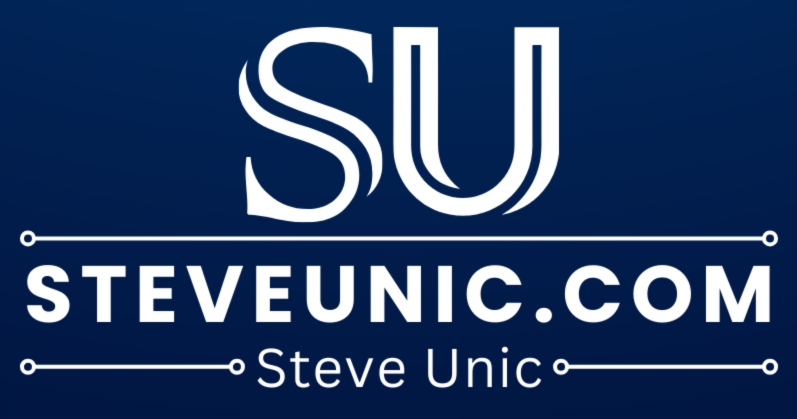
Breast pumps are one of the most essential medical devices for lactating mothers, especially those newly given birth. Most of the questions expecting mothers ask are; are breast pumps expensive? Are breast pumps covered by insurance in Canada? When can breast pumps be gotten for free?
Here in this article, we will carefully address whether breast pumps are covered by insurance in Canada, the specific duration for the coverage, and other essential information you need to help you answer some of the questions you have on breast pumps and insurance.

Are Breast Pumps Covered By Insurance In Canada?
Breast pumps were not universally covered by insurance in Canada. However, some provinces may offer partial or full coverage for breast pumps in certain situations, such as if there is a medical necessity for using a breast pump or if a baby is born prematurely and needs extra care.
Most insurance providers only provide coverage for the cost of a breast pump or lactation consultant services within 60-90 days after delivery while you take care of the cost after that. For insurance to cover your breast pumps, you must get a prescription from your primary physician that shows that the pumps are medically necessary.
Disclosure: My site is reader-supported. I may get commissions when you click through the affiliate links (that are great products I use and stand by) on my articles.

Breast Pumps
- Breast pumps are one of the most essential medical devices for lactating mothers, especially those newly given birth.
- Most of the questions expecting mothers ask are; are breast pumps expensive? Are breast pumps covered by insurance in Canada? When can breast pumps be gotten for free?
- Here in this article, we will carefully address whether breast pumps are covered by insurance in Canada
How Much Does a Breast Pump Cost?
The cost of a breast pump can vary depending on the type and brand of the pump you choose. Generally, there are three main types of breast pumps available on the market
Manual Breast Pumps:
These are the most affordable option, typically costing between $20 to $50. They require manual pumping by hand and are usually compact and easy to use.
Single Electric Breast Pumps:
These pumps use an electric motor to create suction and are designed to pump one breast at a time. They are more expensive than manual pumps, with prices ranging from $50 to $200.
Double Electric Breast Pumps:
These pumps can pump both breasts simultaneously, which can be a significant time-saver for mothers who need to pump frequently. Double electric pumps are the most expensive option, and their prices can range from $100 to $400 or more.
How to Get a Breast Pump Covered by Your Insurance

You need to take several steps to get your breast pumps covered by your insurance. Below are general steps you can take to increase your chances of getting a breast pump covered:
Check your insurance policy:
Start by reviewing your health insurance policy or contacting your insurance provider directly. Look for information on whether breast pumps are covered and under what circumstances. Some insurance plans may cover the full cost of a breast pump, while others may cover only specific types or brands.
Understand coverage criteria:
Learn the specific criteria for covering a breast pump. Insurance plans may require a prescription from a healthcare provider stating the medical necessity of a breast pump. They may also have guidelines on when the pump will be covered, such as for premature births or certain medical conditions.
Obtain a prescription:
If your insurance plan requires a prescription, schedule an appointment with your healthcare provider. Discuss your need for a breast pump and ask them to provide a written prescription if they deem it medically necessary. Ensure the prescription includes all the necessary information, such as the type of breast pump required and any specific features.
Contact medical equipment suppliers:
Once you have your prescription, contact medical equipment suppliers that work with your insurance provider. They can guide you through the process and help you choose a breast pump that meets the coverage criteria. Some suppliers may even handle the insurance paperwork on your behalf.
Submit necessary documentation:
Work with the medical equipment supplier to complete any required paperwork for the insurance claim. This may include submitting the prescription, relevant medical records, and any other documentation requested by your insurance company.
Follow up with your insurance company:
After submitting the claim, follow up with your insurance provider to ensure they received the necessary documents and to check the status of your claim. Be prepared to provide any additional information or clarification if requested.
Choose an in-network provider:
If your insurance plan has a network of preferred providers, it’s generally more cost-effective to choose a breast pump from one of those providers. Using an in-network supplier may also streamline the reimbursement process.
Which Questions Should I Ask My Insurance Company?
 When inquiring about coverage for a breast pump or any other medical equipment or service, asking the right questions is essential to understand your insurance benefits clearly. Here are some key questions to ask your insurance company:
When inquiring about coverage for a breast pump or any other medical equipment or service, asking the right questions is essential to understand your insurance benefits clearly. Here are some key questions to ask your insurance company:
- Is a breast pump covered under my insurance plan? If so, what types of breast pumps are covered (manual, single electric, double electric)?
- Do I need a prescription from my healthcare provider to get a breast pump covered? If yes, what information should be included in the prescription?
- What is the process for obtaining a breast pump through insurance? Are there specific suppliers or providers I need to use?
- What is the coverage amount for a breast pump? Will the insurance cover the full cost, or is there a copayment or deductible I need to meet?
- Are there any restrictions on when a breast pump will be covered (e.g., only for premature births or specific medical conditions)?
- Can I get a breast pump before giving birth, or must I wait until after delivery to request coverage?
- Are any specific brands or breast pump models preferred or not covered under the insurance plan?
- How can I submit a claim for a breast pump purchase? What documentation do I need to provide, and what is the deadline for submitting the claim?
- How long does a claim typically take to process, and when can I expect reimbursement or direct payment to the supplier?
- Is there a network of preferred suppliers for breast pumps, and what are the advantages of using an in-network provider?
- Does my insurance plan offer any additional resources or support for breastfeeding, such as lactation consultations or breastfeeding classes?
- Can I get coverage for breast pump accessories, such as replacement parts, storage bags, or nipple shields?
- Are there any other important details or considerations regarding breast pump coverage?
Understanding your insurance coverage will help you navigate getting a breast pump or any other medical equipment more smoothly.

Breast Pumps
- Breast pumps are one of the most essential medical devices for lactating mothers, especially those newly given birth.
- Most of the questions expecting mothers ask are; are breast pumps expensive? Are breast pumps covered by insurance in Canada? When can breast pumps be gotten for free?
- Here in this article, we will carefully address whether breast pumps are covered by insurance in Canada
What Happens if Your Pump Isn’t Covered?

Here are several options to consider if your insurance doesn’t cover your breast pump:
Out-of-Pocket Purchase:
You can purchase the breast pump out of pocket. Depending on the type and brand of the pump you select, the cost can range from relatively affordable to more expensive. Consider researching options and reading reviews to find a breast pump that suits your budget and needs.
Flexible Spending Account (FSA) or Health Savings Account (HSA):
If you have a Flexible Spending Account (FSA) or Health Savings Account (HSA), you can use these funds to cover the cost of the breast pump. With these accounts, you can set aside pre-tax dollars for qualified medical expenses, including breast pumps.
Discount Programs:
Some medical equipment suppliers or retailers offer discount programs for breast pumps. Look for special offers, promotions, or bundles that may help reduce costs.
Borrow or Rent:
If you anticipate using a breast pump for a limited time, you may consider borrowing or renting a breast pump from a friend, family member, or a local hospital or lactation consultant. Make sure to use a hospital-grade pump if you opt for rental, as these are designed for multiple users and have a closed system to ensure hygiene.
Breast Pump Loan Programs:
Some organizations or non-profit groups offer breast pump loan programs, which provide breast pumps to mothers in need for a limited time. These programs might have certain eligibility criteria, so check with local breastfeeding support groups or healthcare providers for more information.
Ask for a Gift:
If you’re comfortable doing so, you could ask family members or friends to contribute toward the cost of the breast pump as a baby shower or post-birth gift.
Frequently Asked Questions
Does Provincial Health Plan Cover Breast Pumps In Canada
Provincial health plans in Canada do not universally cover breast pumps. However, there may be exceptions or specific circumstances covering breast pumps.
In some provinces, breast pumps may be partially or fully covered if there is a medical necessity, such as in cases of premature births or specific medical conditions. Coverage criteria and policies can vary between provinces.
To find out if breast pumps are covered by your provincial health plan and under what circumstances, you can contact your provincial health authority or review the official website for details on the services and medical equipment covered by your plan.
How Many Breast Pumps Can You Get From Insurance?
The number of breast pumps you can get from insurance can vary depending on your insurance plan, the specific coverage policy, and the medical necessity for each pump. Insurance plans typically cover the cost of one breast pump per pregnancy. However, some plans may cover more than one pump under certain circumstances.
For example, if a mother has a premature birth or has specific medical conditions requiring multiple breast pumps, the insurance company may consider covering the cost of an additional pump. In such cases, a healthcare provider’s prescription and documentation supporting the medical need may be required to justify the coverage of multiple pumps.
Is A Breast Pump A Qualified Medical Expense In Canada?
Breast pumps are generally considered qualified medical expenses in Canada to claim medical expenses on your income tax return. If you incur expenses for a breast pump due to a medical need, you may be eligible to claim those expenses as a medical expense tax credit (METC).
The Medical Expense Tax Credit allows individuals to claim eligible medical expenses paid for themselves, their spouse or common-law partner, and certain dependents. To be eligible for the METC, the expenses must meet certain criteria, including:
- It must be for medical services or products necessary for the patient’s medical condition.
- As proof of medical necessity, the expenses must be supported by proper documentation, such as receipts and prescriptions.
Do I Need A Prescription For A Breast Pump Through Insurance?
Many insurance plans, especially in Canada and the United States, may require a prescription from a healthcare provider to cover the cost of a breast pump. The prescription should state the medical necessity for the breast pump, such as if the mother has difficulty breastfeeding or if a medical condition necessitates using a breast pump.
Can I Buy a Breast Pump and Get Reimbursed In Canada
Yes, in some cases, you may be able to buy a breast pump and get reimbursed in Canada, especially if you have health insurance coverage that includes breast pump benefits.
Can I Get A Free Breast Pump After Birth?
In most cases, you may be able to get a free breast pump after giving birth within 60 to 90 days, depending on your specific insurance policy and type. It is important to check with your insurer to know the type of breast pump you will receive, whether manual, electric, or double electric.
Are Breast Pumps Considered Medical Equipment In Canada?
Yes, breast pumps are considered medical equipment in Canada. They are recognized as essential devices to support breastfeeding mothers, especially in cases where breastfeeding may be challenging or when there is a medical need for expressing breast milk.

Breast Pumps
- Breast pumps are one of the most essential medical devices for lactating mothers, especially those newly given birth.
- Most of the questions expecting mothers ask are; are breast pumps expensive? Are breast pumps covered by insurance in Canada? When can breast pumps be gotten for free?
- Here in this article, we will carefully address whether breast pumps are covered by insurance in Canada
Conclusion
Most insurance companies and provincial health care systems cover breast pumps for mothers who gave birth and have difficulty breastfeeding their children directly, and the doctor has prescribed breast pumps. Also, when a child is born prematurely, most insurance plans and provincial healthcare systems offer coverage for breast pumps.






